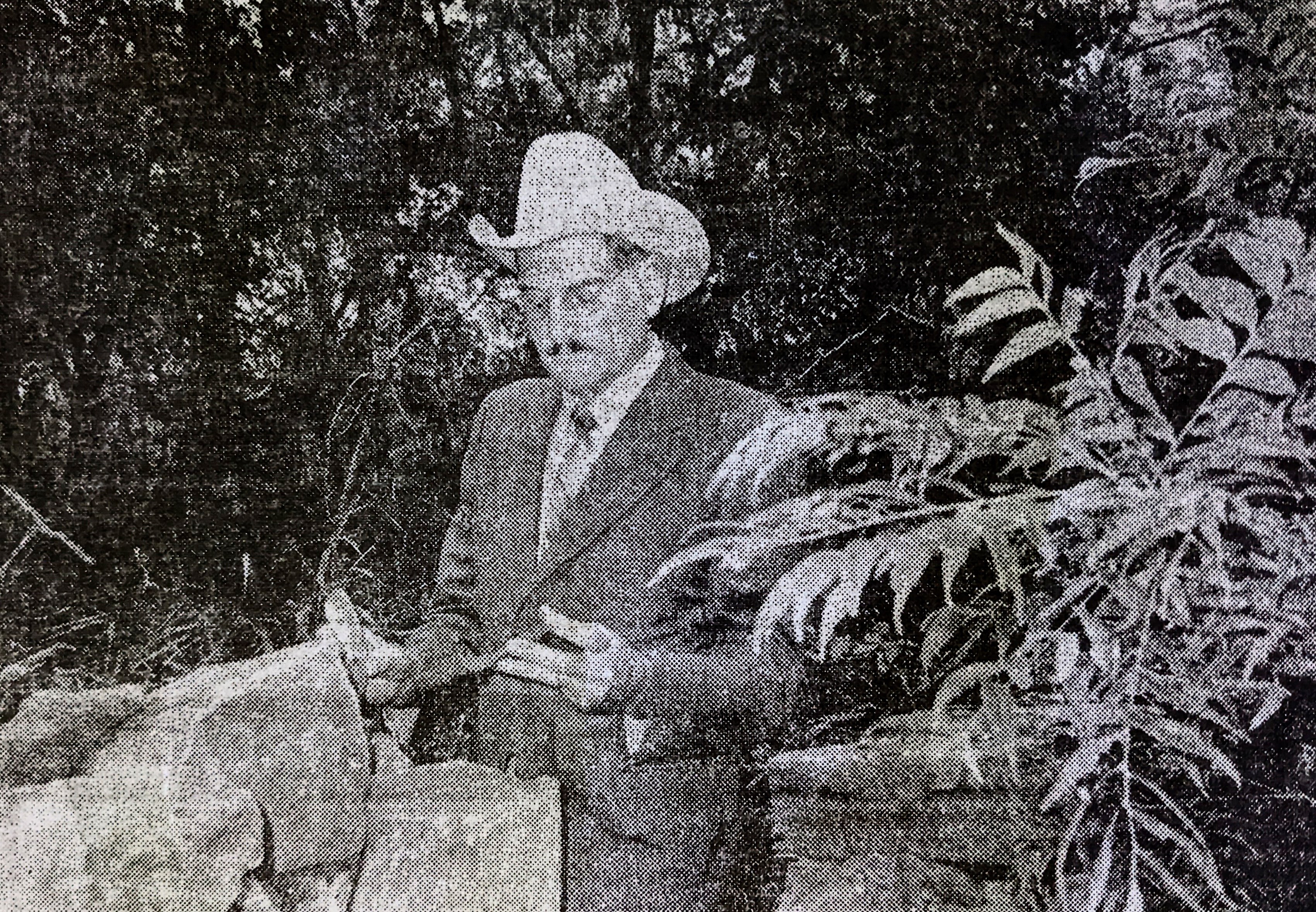Artifacts, Cowboys Influence Collection...
Saturday, January 14, 2023
Article by Gerry Burton Published in the Lubbock Avalanche-Journal, Monday Morning, November 18, 1985

LOOKING AT HISTORY - Western Artist Otho Stubbs of Turkey checks out remnants of an old Matador Ranch camp where he worked cattle long ago. Findings at the Mott camp equate to the things left behind in Indian campgrounds, from which Stubbs has amassed a unique collection of artifacts, some dating back to the Stone Age. (Staff Photo)

LOOKING AT HISTORY - Western Artist Otho Stubbs of Turkey checks out remnants of an old Matador Ranch camp where he worked cattle long ago. Findings at the Mott camp equate to the things left behind in Indian campgrounds, from which Stubbs has amassed a unique collection of artifacts, some dating back to the Stone Age. (Staff Photo)
TURKEY - For more than half a century, Otho Stubbs has picked up bits of the past, remnants of cultures who left tracks in the sandy fields and canyons of West Texas.
Over the years, he amassed a look at the past that touches every culture to have camped and hunted in the area, from Clovis Man stalking the mammoth and the longhorned bison to the Spanish Conquistador looking for gold.
Now the Western artist would like to find his collection a home where future generations could marvel at yesterday's treasure.
When he's no longer around to care for it and pass on researched facts about the people who left them behind, he wants the bits of yesterday to be together, close to the Caprock breaks where he found most of them.
One Ideal location, he believes, is the Caprock Canyon State Park at Quitaque where visitors could learn more about those peoples who roamed the rugged red-walled canyons in ages past.
With the collection, he plans to include stuffed specimens of 26 animals native to the area.
An archaeological exhibit would, he said, put the Quitaque park far ahead of other parks where artifacts from the area were transported to eastern museums or carried away by individuals.
"They don't have anything to show what was there. I miss that when I go see one," he said.
What he has learned, Stubbs shares with history classes and organizations.
The collection includes some rare pieces and might have held more had the artifact bug bitten him as a boy. Back in 1910 when the family came to Turkey, Stubbs had no time for things on the ground. Living history played out by colorful cowboys from surrounding ranches had his total attention.
He still left arrowheads and such things alone when he joined the ranks of his heroes as a working cowboy, storing up history that, later, would go into paintings - and sometimes, one would sell for much more than he earned all year as a cowboy.
It took the winds of the Great Depression dust bowl days to focus his attention on history laid bare on the ground he walked while serving with the Civilian Conservation Service building dams, eradicating cactus and implementing other conservation practices in the Panhandle.
By then, a bout with tuberculosis had put him in touch with the Navajo and Hopi in Arizona.
He had witnessed Indian ceremonies still not open to the white man, and his mind was open to artifacts and signs of heritages left behind.
They showed themselves to him when winds took the sands of time away.
"I could read it on the ground. The wind would blow out here and cover up there," he said.
What really turned him on to archaeology was a lobo wolf skull with an arrowhead in it.
Then he happened onto the Antelope culture on Canadian Creek where "pottery goes back 1500 years and the Indians lived in little stone houses partly dug into the ground."
From there, interest grew. So did the collection.
He found a ceremonial thunderbird at Medicine Mound near Quanah and a stone fire carrier north of Turkey.
Handmade Spanish bridle bits eroded out of a canyon wall near silverton; a Conquistador spur was plowed up near Turkey.
Near Quitaque, he came across a Sandia projectile point, and walking at Caprock Canyon, he found a shell with a hole punched in it and trailed burned rock to discover a necklace of shell beads from the Pacific.
Anything the Indian "back to the Stone Age" used for a tool is represented in his collection: awls, punches, drills, scrapers, projectile points from Clovis Man to the Comanche, knives and bone breakers.
A favorite is the stone axe, a double-bitted tool with a handle that he said could "lay a man's head open."
It came from a campground northwest of Turkey that had been used "as far back as Paleo man - Clovis Folsom and Plainview."
Among his flint knives is one nine inches long, which he believes to be a ceremonial piece since the flaking is very unique, and the blade is too fragile for ordinary use. A tang knife he found is also of the ceremonial style.
For each unusual piece, Stubbs did research to discover its use and exact place in history.
Some of that knowledge has gone into his art, though not as much as the cowboys who caught his eye early, giving him a desire "to glorify their work in paintings" as soon as he saw the herds and the cowboys trail by the Stubbs home.
The cowboys in his paintings are turn-of-the-century vintage, the ones he saw as a boy and joined as a ranch hand "going out with the wagon at the Matador" and working cattle for others.